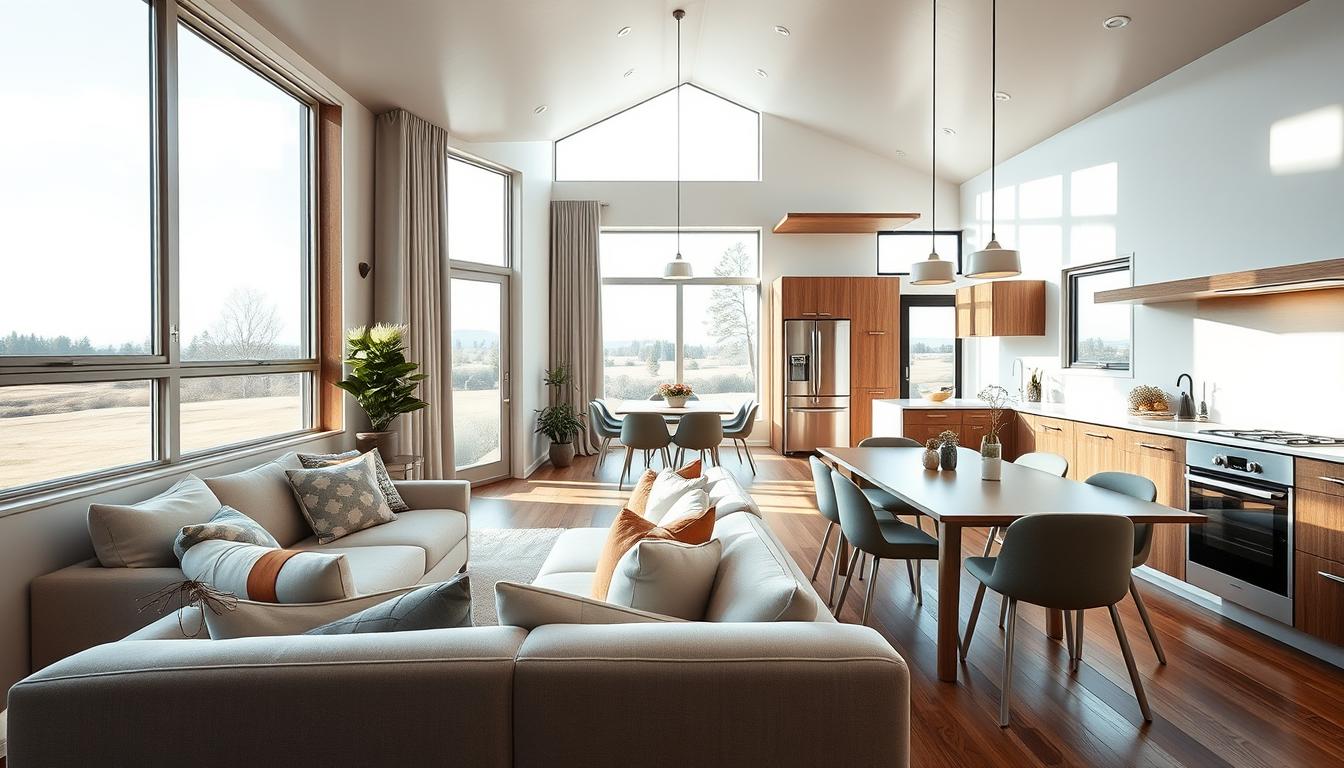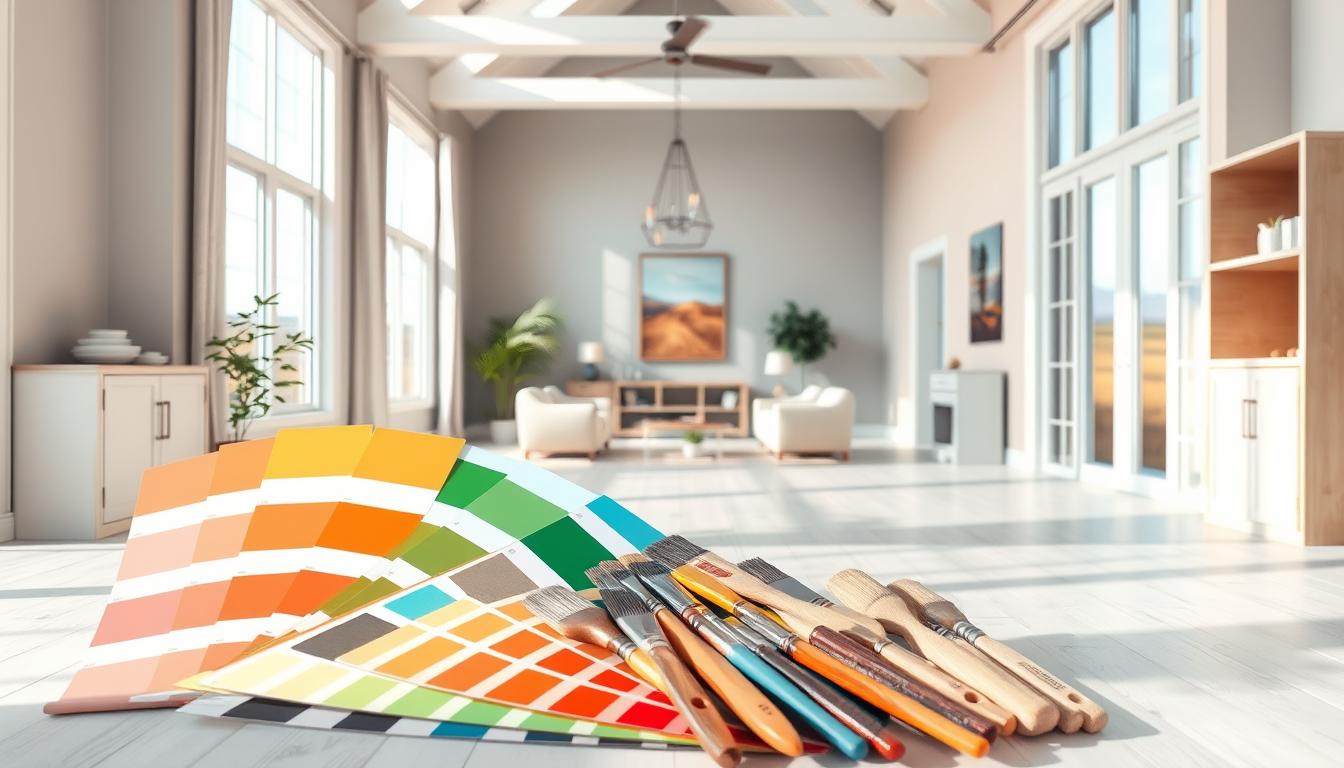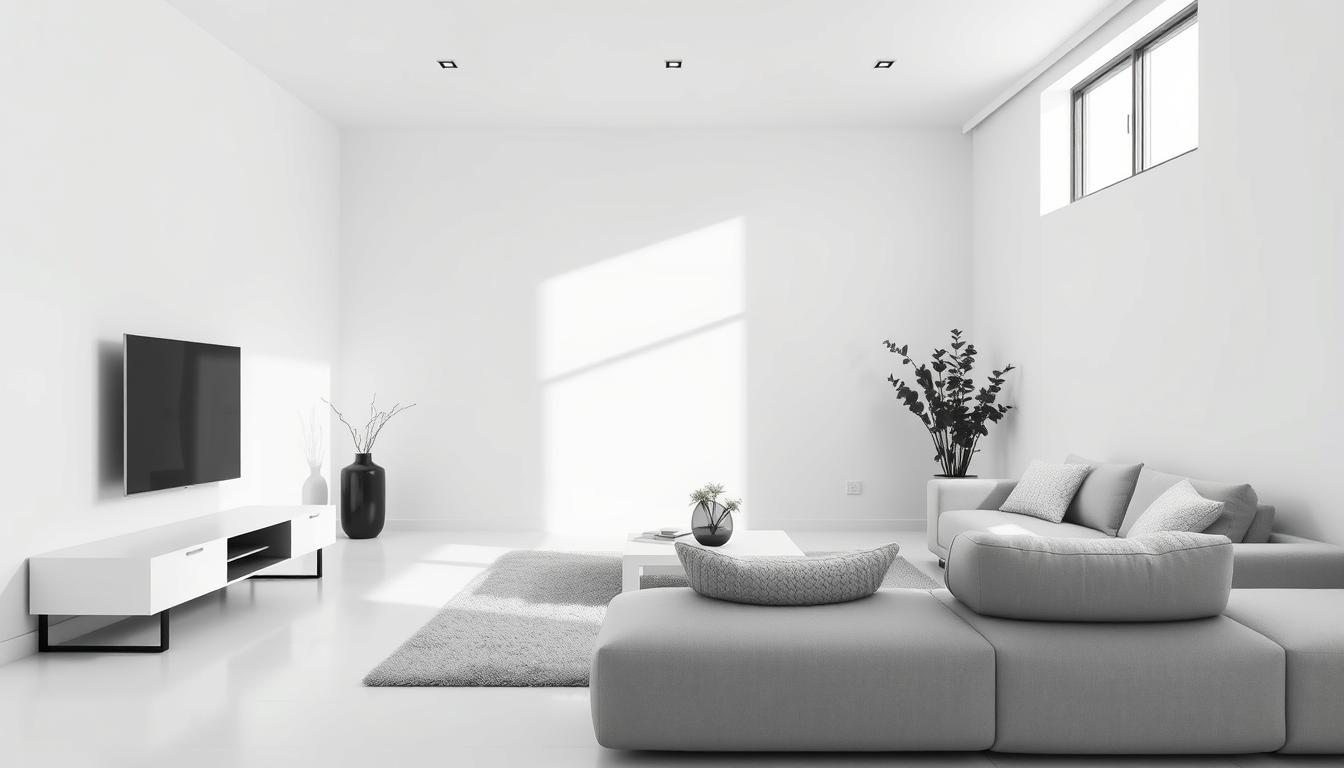The trend of living in shipping container homes is growing fast. Over 15,000 containers are now homes worldwide. It’s not just about being eco-friendly; it’s also about making a space that shows off your style.
Designing the interior of a container home needs careful planning. We’ll look at the important things to think about when turning a container into a stylish and cozy home. You’ll get container home design ideas to start.
We aim to help you make your home’s interior design both beautiful and useful. By following our tips, you can create a space that’s truly yours.
Key Takeaways
- Understand the unique challenges and opportunities of container home interiors.
- Learn how to maximize space and functionality.
- Discover stylish design ideas for your container home.
- Explore ways to personalize your living space.
- Gain insights into creating a comfortable and eco-friendly home.
Understanding the Unique Aspects of Shipping Container Homes
Shipping containers offer both chances and hurdles for eco-friendly homes. It’s key to look at the good and bad sides of shipping container homes. This helps us see how they fit into sustainable living spaces.
Space Constraints and Layout Considerations
Designing a shipping container home means dealing with small spaces. Containers are usually 8 to 40 feet long and 8 feet wide. You need to plan well to use the space wisely.
Here are some tips for making the most of the space:
- Open floor plans to feel more spacious
- Multi-functional furniture to cut down on clutter
- Vertical storage to keep the floor free
| Container Size | Typical Use | Space Optimization Tip |
|---|---|---|
| 8 feet | Small studio or office | Use wall-mounted storage |
| 20 feet | One-bedroom apartment | Incorporate multi-functional furniture |
| 40 feet | Large family home | Design an open floor plan |
Structural Limitations and Benefits
Shipping containers are built from corten steel, which is strong and lasts long. But, it can rust and needs good insulation.
The good things about shipping containers are:
- They are very secure because of their strong build
- They can stand up to natural disasters like earthquakes and hurricanes
- They can be changed and grown easily
By knowing and using these special features, we can make shipping container homes. They can be eco-friendly, cozy, and stylish. They show what sustainable home design is all about.
Planning the Interior Layout for Functionality
To make the most of a shipping container home, planning the interior layout is key. We need to think about how to make the space comfortable and efficient, even when it’s small.
Using small space living solutions is a smart strategy. We must carefully plan the layout and how each area will be used.
Creating Open Living Spaces
Open living spaces make shipping container homes feel bigger. By having fewer separate rooms, we create a sense of freedom. This design makes the space feel larger and improves movement between areas.
Designing Multi-Functional Areas
Designing areas that serve more than one purpose is crucial. In a shipping container home, every square foot counts. Using items like sofa beds or dining tables that work as workspaces boosts the space’s functionality.
For instance, a kitchen can have a dining table that also works for studying or working. This way, we don’t need extra space.
Maximizing Vertical Space
Using vertical space is essential in a shipping container home. Wall-mounted storage and shelving keep the floor clear. This makes the space feel larger and keeps it organized.
By making the most of vertical space, we ensure our shipping container home is both functional and comfortable.
Choosing Materials for the Interior
Choosing the right materials for your shipping container home’s interior is key. It affects comfort and sustainability. You want materials that are durable and good for the planet.
Insulation Options for Comfort
Insulation keeps your shipping container home cozy. You can use spray foam, reflective, or rigid board insulation. Each has its own benefits.
Spray foam insulation seals gaps and keeps the temperature steady. Reflective insulation helps keep it cool in summer.
Sustainable Material Choices
Choosing eco-friendly materials is important. Use reclaimed wood, bamboo flooring, and low-VOC paints. They’re good for the planet and your health.
Adding recycled materials and sustainably sourced products makes your home greener.
Durable Finishes for Long-Term Living
Choose finishes that last. Concrete flooring, stainless steel, and ceramic tiles are great. They’re tough and easy to keep up.
Using durable finishes means less need for repairs. It saves time and money over the years.
By picking the right insulation, materials, and finishes, you get a modern, comfy, and green home. This careful choice makes your space beautiful, functional, and sustainable.
Color Schemes That Enhance Container Interiors
The right color scheme can make your shipping container home feel spacious and welcoming. We’ll look at how to use color to improve your container home’s interior.
Light Colors to Create Space
Light colors on walls and ceilings can make your container home look bigger. Light colors reflect light, making the space feel more open. This is key in container homes where space is tight.
Some good light colors include:
- Soft whites
- Creams
- Pale grays
- Pastel shades
Accent Walls and Their Impact
Accent walls can add a splash of color and interest to your container home. A bold, contrasting color on one wall can draw attention. It also helps hide the container’s industrial look.
Think about the overall color scheme and mood you want. For example, deep blues or greens can calm the space. Bright reds or oranges can energize it.
Choosing the Right Paint and Textiles
Choosing the right paint and textiles is key for affordable, beautiful decor. Use low-VOC paints for better air quality. For textiles, pick durable, easy-to-care-for materials like cotton, linen, or synthetic blends.
| Material | Durability | Maintenance |
|---|---|---|
| Cotton | Medium | Easy |
| Linen | High | Moderate |
| Synthetic Blends | High | Easy |
By picking the right colors, paint, and textiles, you can make your shipping container home beautiful and affordable. It will be both functional and stylish.
Furnishing Your Shipping Container Home
Furnishing a shipping container home needs careful planning. You must think about both how things work and how they look. This ensures your home is both functional and stylish.
Space-Saving Furniture
Choosing the right furniture is key in a shipping container home. There’s not much room, so you need space-saving furniture. Look for foldable tables, wall-mounted desks, and beds with storage underneath.
- Foldable and retractable furniture
- Multi-functional pieces (e.g., a sofa bed)
- Nesting tables and chairs
Custom-Built Options
Custom-built furniture can make your shipping container home truly unique. It lets you design furniture that fits your home perfectly. This way, you get the most out of your space.
Custom-built furniture can include:
- Built-in shelving units
- Tailored storage solutions
- Unique seating areas
The Importance of Comfort and Style
Functionality is important, but so is comfort and style. Comfortable living in a shipping container home means finding a balance. You want it to feel cozy and inviting.
To achieve this balance, consider:
- Plush textiles and rugs
- Ergonomic furniture
- Personal decorative touches
Here’s a comparison of different furniture types suitable for shipping container homes:
| Furniture Type | Space Efficiency | Comfort Level | Customizability |
|---|---|---|---|
| Foldable Furniture | High | Variable | Low |
| Custom-Built Furniture | High | High | High |
| Multi-Functional Furniture | High | Variable | Medium |
Lighting Solutions for Container Living
Lighting is key to making a shipping container home feel welcoming and functional. It’s important to pick lighting that brightens the space and is good for the planet.
Natural Light: Windows and Skylights
Using natural light is a smart way to light up a shipping container home. Windows and skylights can make the space feel bigger and more inviting. Choose them wisely for their size, placement, and energy use.
Benefits of Natural Light
- Reduces the need for artificial lighting
- Enhances the aesthetic appeal of the interior
- Can improve mood and productivity
Layered Lighting Techniques
Layered lighting adds depth and flexibility to a shipping container home. Use a mix of light sources like overhead lights, table lamps, and floor lamps. This creates a warm and inviting atmosphere.
| Lighting Layer | Purpose | Examples |
|---|---|---|
| Ambient | General illumination | Overhead lighting, skylights |
| Task | Focused lighting for tasks | Desk lamps, under-cabinet lighting |
| Accent | Highlighting specific features | Track lighting, picture lights |
Energy-Efficient Options
Energy efficiency is crucial for shipping container homes. LED lights are a great choice because they use less energy and last longer. Smart lighting systems can also help save energy by controlling when lights turn on and off.
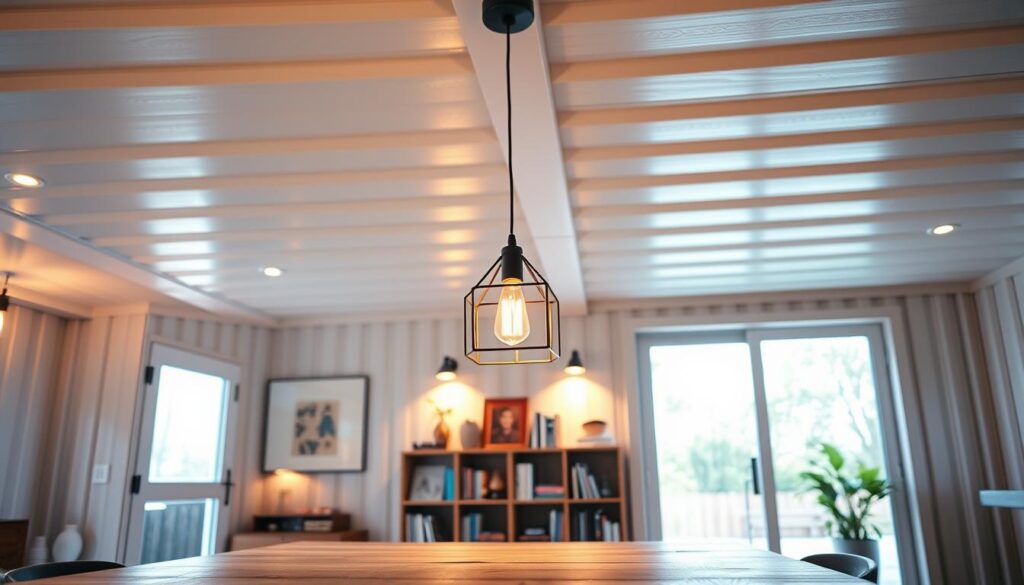
By using these lighting solutions, homeowners can make their space bright, eco-friendly, and beautiful.
Adding Personal Touches to Your Container Home
Making your shipping container home your own means adding personal touches. These should show your style and personality. We’ve seen how important interior design is for a cozy and welcoming space. Now, let’s explore how to make your home feel more personal and inviting.
Artwork and Decor Ideas
Artwork and decor are key to making your home feel like yours. You can pick pieces that match your style, whether it’s modern or eclectic. Using sustainable materials for decor, like reclaimed wood, is a great idea. It fits well with the eco-friendly nature of container homes.
When picking artwork, think about the look you want. Choose pieces that match your furniture’s color and style. Artwork can also highlight a room’s focal point, catching the eye.
Indoor Plants for Freshness
Indoor plants improve air quality and add natural beauty. Pick plants that do well indoors and fit your lifestyle. Succulents and spider plants are good choices. They make your space feel fresher and warmer.
Think about where to put your plants. Near windows or under skylights is best. Use planters that match your decor to make them look good.
Personal Collection Displays
Showing off personal collections adds character to your home. It could be vintage items, travel souvenirs, or achievements. Use creative display methods like shadow boxes or floating shelves to show them off.
When displaying your collections, think about how they fit with your decor. You can group similar items or create a gallery wall. The goal is to show your collections without cluttering your space.
Outdoor Integration with Interior Spaces
Making your outdoor spaces blend with your shipping container home’s interior can really improve your living space. It makes your home feel bigger and more welcoming. This is all thanks to small space living solutions.
Designing Entryways and Patios
Creating a warm entryway and patio is key for outdoor integration. Pick materials that match your modern shipping container interiors, like steel, wood, or composite decking.
- Choose furniture that’s both useful and can stand up to the weather.
- Use lights to set the mood and highlight important spots.
- Add plants to bring in a natural feel.
For more ideas on making your outdoor spaces better, check out our guide on transforming trailer home interiors. It has great tips for creating a unified living area.
Connecting Indoor and Outdoor Living
To smoothly move from inside to outside, try these tips:
- Use big sliding doors or windows to link rooms.
- Add outdoor kitchens or dining spots to grow your living area.
- Pick flooring that looks good both inside and outside.
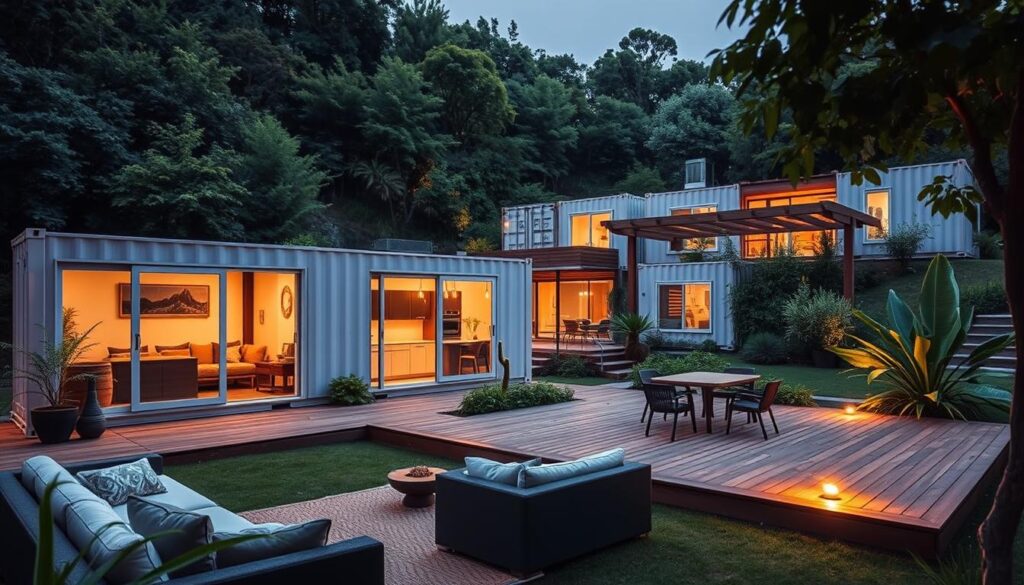
Utilizing Container Exterior for Storage
Storing things well is crucial in small space living solutions. Use the outside of your shipping container home by:
- Putting up shelving units or storage spots.
- Using the container’s outside walls for hanging bikes, tools, or other stuff.
- Creating a secret storage spot under the patio or deck.
By using these ideas, you can improve your living experience. And make the most of your modern shipping container interiors.
Tips for Budgeting Your Container Home Interior Design
Designing a shipping container home interior on a budget needs careful planning and creativity. We’ve looked at different parts of container home design. It’s key to think about the money side of your choices.
Realistic Budgeting
It’s important to set realistic budget goals. We suggest setting aside a certain percentage of your budget for interior design and decor. This helps you focus your spending and make smart choices.
Prioritizing Investments
Focus on key areas for spending. Think about insulation, lighting, and durable finishes first. These ensure your home is cozy and works well. For cheaper decor, look into repurposed materials and creative ideas.
Affordable Decor
To get a beautiful and useful space without spending too much, try thrift store finds, DIY projects, and multi-functional furniture. Being budget-conscious and making wise design choices can lead to a stunning container home that shows off your style.

